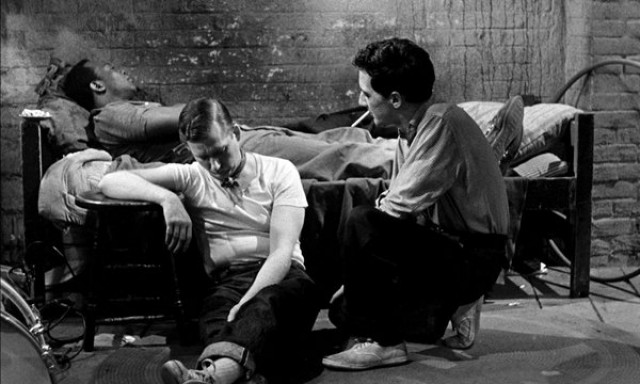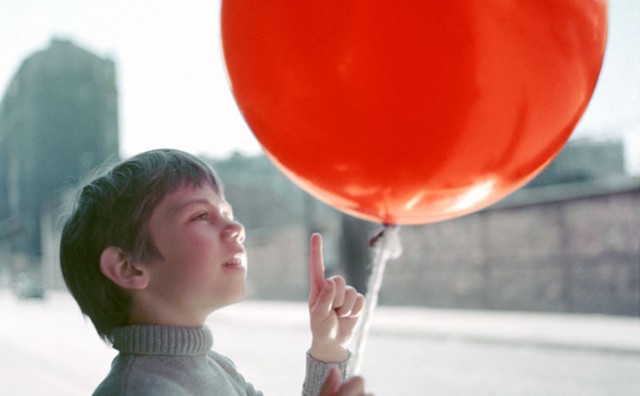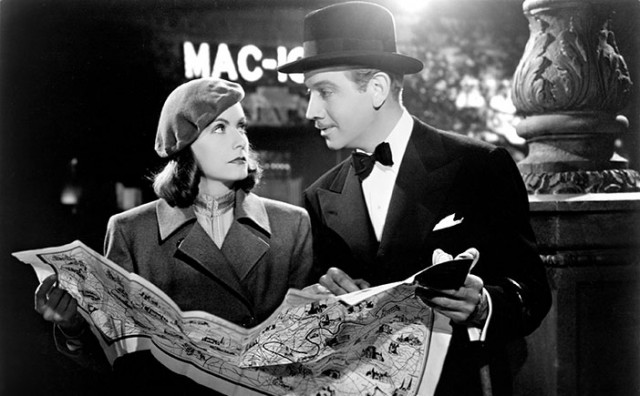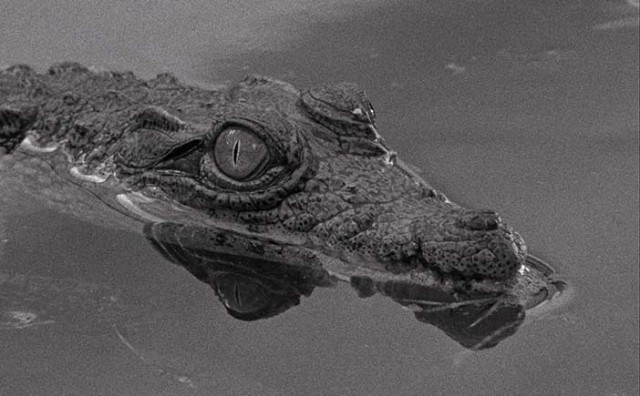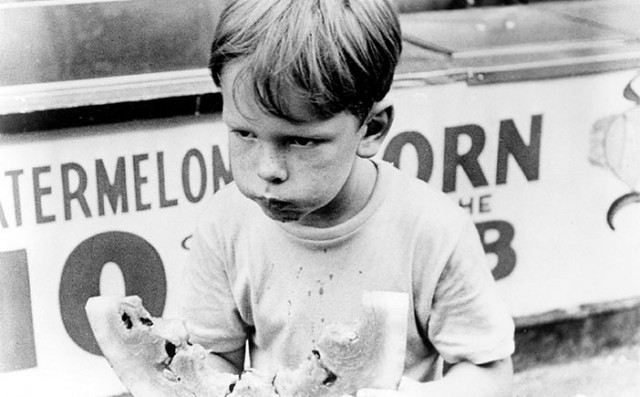
Joey Norton goes on the adventure of a lifetime in Coney Island in underground indie classic LITTLE FUGITIVE
LITTLE FUGITIVE (Morris Engel, Ray Ashley, and Ruth Orkin, 1953)
Film Forum
209 West Houston St.
February 1-7
212-727-8110
www.filmforum.org
 Film Forum’s excellent “New Yawk New Wave” series, consisting of more than three dozen independent shorts, features, and documentaries made in and about the Big Apple, came to a close on January 31, setting the stage for one of the most influential and important — and vastly entertaining — works to ever come out of the city, Morris Engel’s charming Little Fugitive. In celebration of the film’s sixtieth anniversary, Film Forum is screening a newly restored 35mm print of the underground classic, which won the Silver Lion at the Venice Film Festival in 1953, was nominated for a Best Screenplay Oscar, and was entered into the National Film Registry in 1997. Written and directed with Ray Ashley and Ruth Orkin, Engel’s future wife, Little Fugitive follows the gritty, adorable exploits of seven-year-old wannabe cowboy Joey Norton (Richie Andrusco, in his only film role), who runs away to Coney Island after his older brother, Lennie (Richard Brewster), and his brother’s friends, Harry (Charlie Moss) and Charley (Tommy DeCanio), play a trick on the young boy, using ketchup to convince Joey that he accidentally killed Lennie. With their single mother (Winifred Cushing) off visiting their ailing mother, Joey heads out on his own, determined to escape the cops who are surely after him. But once he gets to Coney Island, he decides to take advantage of all the crazy things to be found on the beach, along the boardwalk, and in the surrounding area, including, if he can get the money, riding a real pony.
Film Forum’s excellent “New Yawk New Wave” series, consisting of more than three dozen independent shorts, features, and documentaries made in and about the Big Apple, came to a close on January 31, setting the stage for one of the most influential and important — and vastly entertaining — works to ever come out of the city, Morris Engel’s charming Little Fugitive. In celebration of the film’s sixtieth anniversary, Film Forum is screening a newly restored 35mm print of the underground classic, which won the Silver Lion at the Venice Film Festival in 1953, was nominated for a Best Screenplay Oscar, and was entered into the National Film Registry in 1997. Written and directed with Ray Ashley and Ruth Orkin, Engel’s future wife, Little Fugitive follows the gritty, adorable exploits of seven-year-old wannabe cowboy Joey Norton (Richie Andrusco, in his only film role), who runs away to Coney Island after his older brother, Lennie (Richard Brewster), and his brother’s friends, Harry (Charlie Moss) and Charley (Tommy DeCanio), play a trick on the young boy, using ketchup to convince Joey that he accidentally killed Lennie. With their single mother (Winifred Cushing) off visiting their ailing mother, Joey heads out on his own, determined to escape the cops who are surely after him. But once he gets to Coney Island, he decides to take advantage of all the crazy things to be found on the beach, along the boardwalk, and in the surrounding area, including, if he can get the money, riding a real pony.
A no-budget black-and-white neo-Realist masterpiece shot by Engel with a specially designed lightweight camera that was often hidden so people didn’t know they were being filmed, Little Fugitive explores the many pleasures and pains of childhood and the innate value of home and family. As Joey wanders around Coney Island, he meets all levels of humanity, preparing him for the world that awaits as he grows older. Meanwhile, Engel gets into the nooks and crannies of the popular beach area, from gorgeous sunrises to beguiling shadows under the boardwalk. In creating their beautifully told tale, Engel, Ashley, and Orkin use both trained and nonprofessional actors, including Jay Williams as Jay, the sensitive pony ride man, and Will Lee, who went on to play Mr. Hooper on Sesame Street, as an understanding photographer, while Eddie Manson’s score continually references “Home on the Range.” Rough around the edges in all the right ways, Little Fugitive became a major influence on the French New Wave, with Truffaut himself singing its well-deserved praises. There’s really nothing quite like it, before or since. Little Fugitive is running at Film Forum February 1-7, with Andrusco and Mary Engel, the daughter of Morris Engel and Ruth Orkin, on hand for Q&As following the 6:00 and 7:40 shows on Friday night. The film will be preceded by D. A. Pennebaker’s whirlwind 1953 short, Daybreak Express, a wild ride on the Third Avenue El, set to the title song by Duke Ellington.
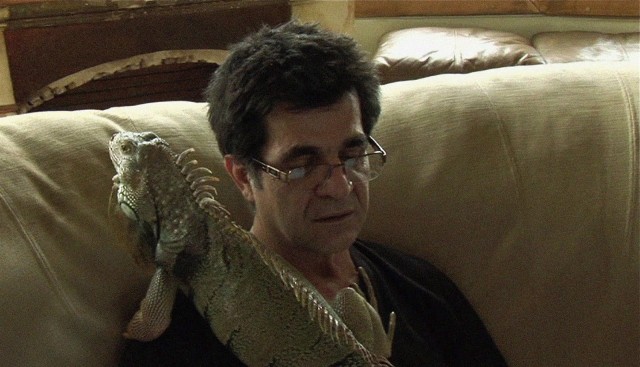
 “You call this a film?” Jafar Panahi asks rhetorically about halfway through the revealing documentary This Is Not a Film. After several arrests beginning in July 2009 for supporting the opposition party, the highly influential and respected Iranian filmmaker (Crimson Gold, Offside) was convicted in December 2010 for “assembly and colluding with the intention to commit crimes against the country’s national security and propaganda against the Islamic Republic.” Although facing a six-year prison sentence and twenty-year ban on making or writing any kind of movie, Panahi is a born storyteller, so he can’t stop himself, no matter the risks. Under house arrest, Panahi has his friend, fellow director Mojtaba Mirtahmasb (Lady of the Roses), film him with a handheld DV camera over ten days as Panahi plans out his next movie, speaks with his lawyer, lets his pet iguana climb over him, and is asked to watch a neighbor’s dog, taking viewers “behind the scenes of Iranian filmmakers not making films.” Panahi even pulls out his iPhone to take additional video, photographing New Year’s fireworks that sound suspiciously like a military attack. Panahi is calm throughout, never panicking (although he clearly does not want to take care of the barking dog) and not complaining about his situation, which becomes especially poignant as he watches news reports on the earthquake and tsunami disaster in Japan. “But you can’t make a film now anyhow, can you?” Mirtahmasb — who will later be arrested and imprisoned as well — asks at one point. “So what I can’t make a film?” Panahi responds. “That means I ask you to take a film of me? Do you think it will turn into some major work of art?” This Is Not a Film, which was smuggled out of Iran in a USB drive hidden in a birthday cake so it could be shown at Cannes, is indeed a major work of art, an important document of government repression of free speech as well as a fascinating examination of one man’s intense dedication to his art and the creative process. This Is Not a Film is screening January 20 at the Museum of the Moving Image as part of the “Curators’ Choice: The Best of 2012” series, consisting of works selected by chief curator David Schwartz and assistant film curator Rachael Rakes; upcoming screenings include Wes Anderson’s Moonrise Kingdom, David Cronenberg’s Cosmopolis, and Hong Sang-soo’s In Another Country.
“You call this a film?” Jafar Panahi asks rhetorically about halfway through the revealing documentary This Is Not a Film. After several arrests beginning in July 2009 for supporting the opposition party, the highly influential and respected Iranian filmmaker (Crimson Gold, Offside) was convicted in December 2010 for “assembly and colluding with the intention to commit crimes against the country’s national security and propaganda against the Islamic Republic.” Although facing a six-year prison sentence and twenty-year ban on making or writing any kind of movie, Panahi is a born storyteller, so he can’t stop himself, no matter the risks. Under house arrest, Panahi has his friend, fellow director Mojtaba Mirtahmasb (Lady of the Roses), film him with a handheld DV camera over ten days as Panahi plans out his next movie, speaks with his lawyer, lets his pet iguana climb over him, and is asked to watch a neighbor’s dog, taking viewers “behind the scenes of Iranian filmmakers not making films.” Panahi even pulls out his iPhone to take additional video, photographing New Year’s fireworks that sound suspiciously like a military attack. Panahi is calm throughout, never panicking (although he clearly does not want to take care of the barking dog) and not complaining about his situation, which becomes especially poignant as he watches news reports on the earthquake and tsunami disaster in Japan. “But you can’t make a film now anyhow, can you?” Mirtahmasb — who will later be arrested and imprisoned as well — asks at one point. “So what I can’t make a film?” Panahi responds. “That means I ask you to take a film of me? Do you think it will turn into some major work of art?” This Is Not a Film, which was smuggled out of Iran in a USB drive hidden in a birthday cake so it could be shown at Cannes, is indeed a major work of art, an important document of government repression of free speech as well as a fascinating examination of one man’s intense dedication to his art and the creative process. This Is Not a Film is screening January 20 at the Museum of the Moving Image as part of the “Curators’ Choice: The Best of 2012” series, consisting of works selected by chief curator David Schwartz and assistant film curator Rachael Rakes; upcoming screenings include Wes Anderson’s Moonrise Kingdom, David Cronenberg’s Cosmopolis, and Hong Sang-soo’s In Another Country.
 One of the ultimate nightmare scenarios of 1960s New York City, Larry Peerce’s gritty black-and-white The Incident takes viewers deep down into the subway as two thugs terrorize a group of helpless passengers. Joe Ferrante (Tony Musante) and Artie Connors (Martin Sheen, in his first movie role) are out for kicks, so after getting some out on the streets, they head underground, where they find a wide-ranging collection of twentieth-century Americans to torture, including Arnold and Joan Robinson (Brock Peters and Ruby Dee), Bill and Helen Wilks (Ed McMahon and Diana Van der Vlis), Sam and Bertha Beckerman (Jack Gilford and Thelma Ritter, in her last role), Douglas McCann (Gary Merrill), Muriel and Harry Purvis (Jan Sterling and Mike Kellin), Alice Keenan (Donna Mills), soldiers Felix Teflinger and Phillip Carmatti (Beau Bridges and Robert Bannard), and others, each representing various aspects of contemporary culture and society, all with their own personal problems that come to the surface as the harrowing ride continues. It’s a brutal, claustrophobic, highly theatrical film that captures the fear that haunted the city in the 1960s and well into the ’70s, with an all-star cast tackling such subjects as racism, teen sex, alcoholism, homosexuality, war, and the state of the American family. The rarely shown drama, some of which was filmed in the actual subway system against the MTA’s warnings, is screening at Film Forum January 16-17 in a double feature with Anthony Harvey’s Dutchman as part of the three-week festival “New Yawk New Wave,” comprising seminal independent films made in and about New York City; among the other double features in the series are Jim McBride’s David Holzman’s Diary and Milton Moses Ginsberg’s Coming Apart, Kenneth Anger’s Scorpio Rising and Andy Warhol’s My Hustler, Martin Scorsese’s Mean Streets and Who’s That Knocking at My Door, and Brian De Palma’s Greetings and Hi, Mom!
One of the ultimate nightmare scenarios of 1960s New York City, Larry Peerce’s gritty black-and-white The Incident takes viewers deep down into the subway as two thugs terrorize a group of helpless passengers. Joe Ferrante (Tony Musante) and Artie Connors (Martin Sheen, in his first movie role) are out for kicks, so after getting some out on the streets, they head underground, where they find a wide-ranging collection of twentieth-century Americans to torture, including Arnold and Joan Robinson (Brock Peters and Ruby Dee), Bill and Helen Wilks (Ed McMahon and Diana Van der Vlis), Sam and Bertha Beckerman (Jack Gilford and Thelma Ritter, in her last role), Douglas McCann (Gary Merrill), Muriel and Harry Purvis (Jan Sterling and Mike Kellin), Alice Keenan (Donna Mills), soldiers Felix Teflinger and Phillip Carmatti (Beau Bridges and Robert Bannard), and others, each representing various aspects of contemporary culture and society, all with their own personal problems that come to the surface as the harrowing ride continues. It’s a brutal, claustrophobic, highly theatrical film that captures the fear that haunted the city in the 1960s and well into the ’70s, with an all-star cast tackling such subjects as racism, teen sex, alcoholism, homosexuality, war, and the state of the American family. The rarely shown drama, some of which was filmed in the actual subway system against the MTA’s warnings, is screening at Film Forum January 16-17 in a double feature with Anthony Harvey’s Dutchman as part of the three-week festival “New Yawk New Wave,” comprising seminal independent films made in and about New York City; among the other double features in the series are Jim McBride’s David Holzman’s Diary and Milton Moses Ginsberg’s Coming Apart, Kenneth Anger’s Scorpio Rising and Andy Warhol’s My Hustler, Martin Scorsese’s Mean Streets and Who’s That Knocking at My Door, and Brian De Palma’s Greetings and Hi, Mom!